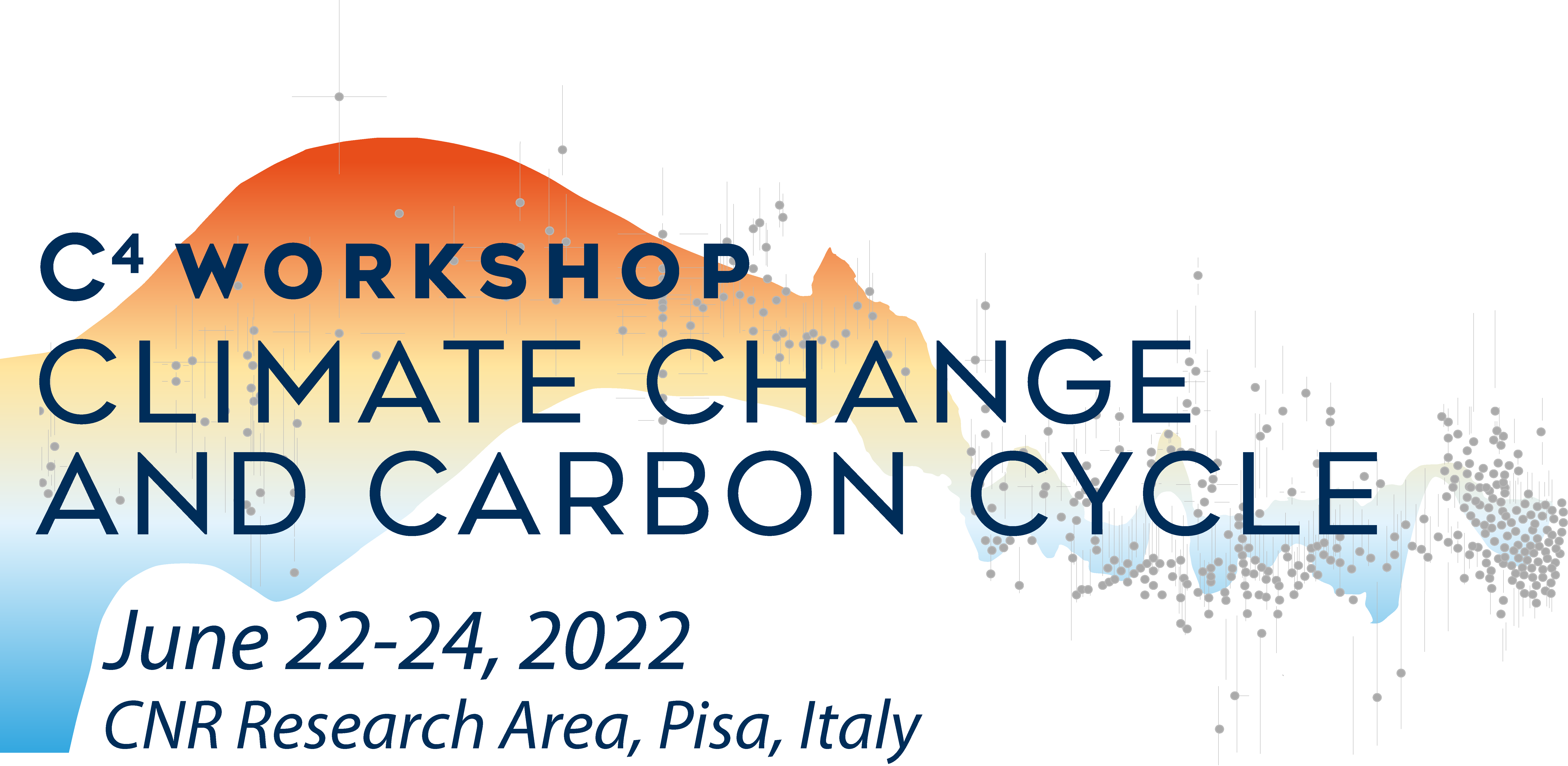
The “Paleoclimate Dynamics” Working Group was born following a workshop organized in 2017 by the Department of Earth System Sciences and Environmental Technologies (DSSTTA) of the CNR at the headquarters of the Institute of Marine Sciences (CNR-ISMAR) in Venice, where approximately 70 researchers from Italian universities and research institutions met, with the aim of briefly illustrating their research activities in the paleoclimate sector.
The DSSTTA, recognizing on the one hand the value of Italian research on paleoclimate and on the other the lack of a network that would enhance its potential, has decided to promote the creation of the first Working Group (WG) “Paleoclimate Dynamics” of the CNR, established on May 22, 2018. The group is made up of twelve researchers from numerous CNR institutes and universities and two members of the DSSTTA staff.
highlighs
The International Workshop C4 “Climate Change and Carbon Cycle” – Pisa, 22-24/06/2022 – discover the event
Why a network dedicated to Paleoclimate?
The geological history of the Earth has seen a series of climate changes that occurred at different time scales and with different boundary conditions. These past events provide valuable information on the general functioning of the Earth’s climate system, the feedbacks operating, the interactive dynamics between its different components (atmosphere, hydrosphere, cryosphere, lithosphere and biosphere), the role of internal and external forcing, the background of natural variability and its sensitivity. The in-depth knowledge of these processes and variables therefore allows us to better understand current climate changes and to reduce the uncertainties of forecasting models for future climate.
Although past climate variables are rarely directly recorded (e.g., air bubbles trapped in ice cores from large polar ice caps or mountain glaciers that allow direct measurement of the chemical and isotopic composition of the Earth’s atmosphere dating back hundreds of thousands of years), important information on past climate can still be indirectly obtained through proxy data, i.e. physical, biological or geochemical properties sensitive to climate factors. It is therefore of fundamental importance to mutually validate and verify paleoclimate reconstructions by calibrating the relationships between proxies and instrumental observations of the present climate, as well as by comparing past climate reconstructions with paleoclimate model outputs. This double link between proxies and models highlights the need to intensify both the collection, quantification and study of paleoclimate data and the development and use of numerical models for paleoclimate studies. This last aspect could represent one of the novelties of the CNR research, as reported in the white paper drawn up by the CNR for the Strategic Area “Global Change”. In a process of approaching the correct reconstruction of the past climate and the understanding of climate dynamics, a strong synergy between experts in current climate dynamics and paleoclimatologists could provide new information on the role of external forcing and internal oscillations of the climate system in determining possible changes.
In June 2019, the Working Group “Paleoclimate Dynamics” organized the first workshop on the history and dynamics of climate during the last 150 thousand years (from the Eemian to the Anthropocene) which was held at the Congress Center of the CNR Research Area in Bologna. The meeting involved 110 researchers from various Italian universities and research institutions and researchers from the University of Vigo (Spain) and GEOPS (France) who discussed the issues related to past climate variations and the ways to determine them quantitatively, from temperature oscillations in the Mediterranean Sea and in the polar areas during the last 150 thousand years, to the history of Alpine glaciers and past drought periods, up to recent sea level variations.
For information or proposals you can write to us at the email address dinamica-paleo@cnr.it
Tasks of the Working Group
- To survey and harmonize the research activities on paleoclimate reconstructions and paleoclimate dynamics carried out at the Institutes belonging to the Department of Earth System Sciences and Environmental Technologies.
- Propose common research topics on paleoclimate dynamics.
- Identify possible opportunities and project calls at national and international level and support the CNR paleoclimatic community in participating in such calls.
- Organize at least one annual meeting and, periodically, doctoral and post-doctoral schools dedicated to paleoclimate dynamics.
- Prepare an annual report containing the summary of the paleoclimatic activities carried out at the CNR DSSTTA Institutes.
Participants
Coordinator: Eleonora Regattieri (IGG)
Vice-Coordinator: Biagio Giaccio (IGAG)
Components:
Paolo Montagna (ISP)
Lucilla Capotondi (ISMAR)
Michele Brunetti (ISAC)
Roberta D’Agostino (ISAC)
Giovanni Monegato (IGG)
Cesare Ravazzi (IGAG)
Andrea Lami (IRSA)
Irene Cornacchia (IGG)
Alessandra Asioli (ISMAR)
Donatella Insinga (ISMAR)
Yang Chunxue (ISMAR)
Francesco Cavalcante (IMAA)
Fabrizio Lirer (UniSapienza)
Elisa Palazzi (UniTorino)
Barbara Stenni (UniVenezia)
Carlo Baroni (UniPisa)
Roberto Bellucci (DSSTTA) – Technical-scientific secretariat

